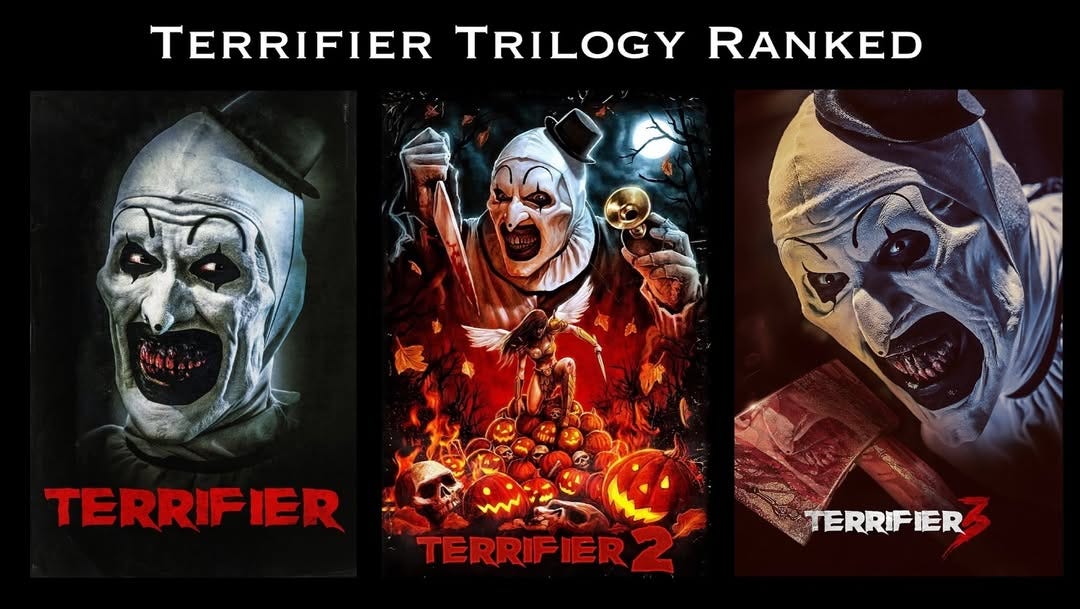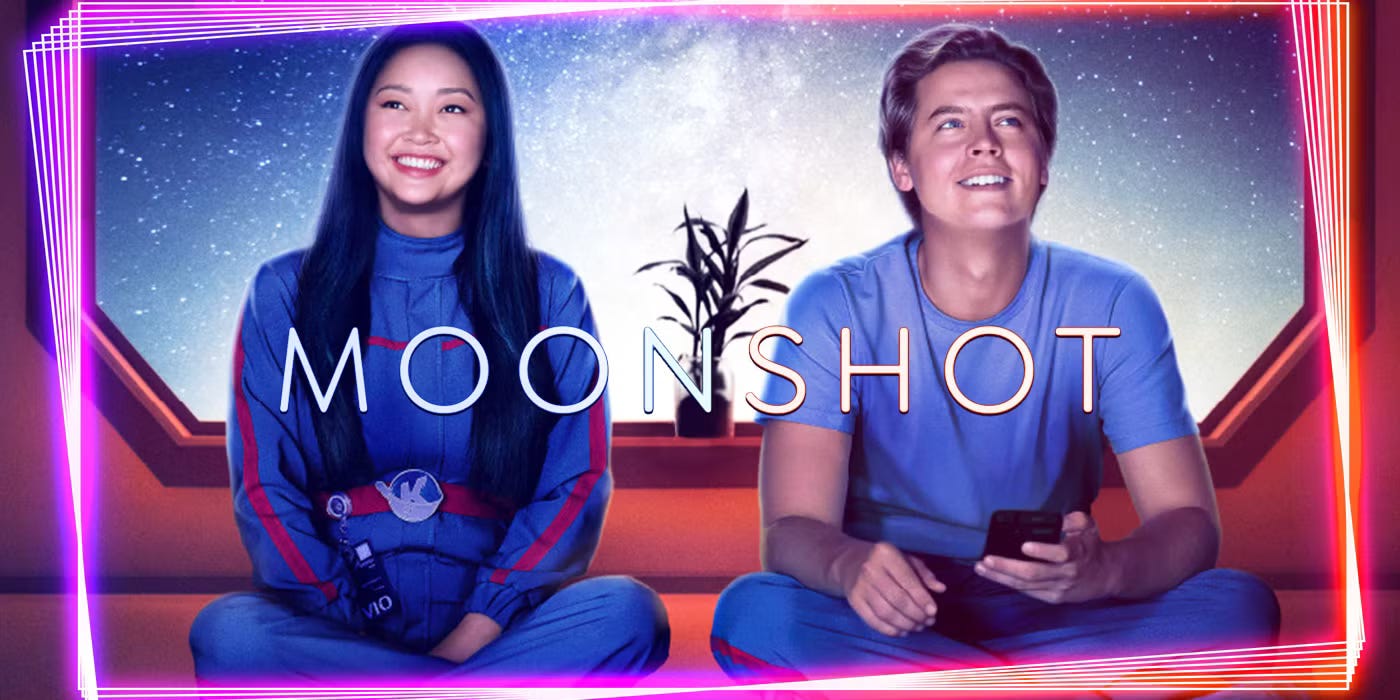FilmStack Talk: V.O.D. = Video Open to Discovery?
Recent box office triumphs (and flops) suggest we may be misinterpreting VOD's purpose in the larger distribution ecosystem.
Walk with me.
Recently we saw THE TOXIC AVENGER remake in a theater during Labor Day weekend.
Theatrical Tasting: THE TOXIC AVENGER (2023)
Our second ever “Theatrical Tasting” where we journey into local theaters in Los Angeles, and this time we jumped right into recording post-screening at the local Gelson’s wine bar. It was Labor Day so the options of what was open were kinda sparse.
It was the film’s opening weekend, after struggling for years - plural - to find distribution. With a mere $500K budget, it wasn’t looking for a particularly massive payout, yet it found too little interest from studios and streamers alike. Until Cineverse picked it up, the same group behind TERRIFIER 3’s enormous box office success.
Even more intriguing, Cineverse decided to put a portion of TOXIC’s marketing budget into a deal with a non-profit to cancel medical debt - which the film has thus far managed to the tune of $7 million dollars! The math is comlicated, but the deal was: $5 million would be cancelled upon the film’s release, with another $1 million for every $1M the movie made in theaters.
When we went on its opening weeked, in Los Angeles, we were 2 of maybe 10 people in the theater. The film has made ~$2M in three weeks now. Even with Cineverse behind them, even with the Toxic Avenger name recognition, and even with the super-cool medical debt marketing deal.
Word of mouth and interest has been minimal.
One the flipside of this, we also covered KPOP DEMON HUNTERS, the “little Netflix movie that could”, which had a unique path to success.
KPOP DEMON HUNTERS (2025) Paired with Chilean Pais and Sipping Vinegar
Neither myself nor Dallas are the target demographic for KPOP DEMON HUNTERS, but after reading Andrew Truong’s post about its unexpected, meteoric rise, we were suddenly very curious.
Part of a 2021 post-pandemic deal where Sony would develop and produce, and Netflix covered the full budget plus a 25% premium in exchange for all rights worldwide upon release. KPOP had a $100M budget - small by mainstream animation standards where most Pixar features are $250M. Sony was thus paid $100M + $25M by Netflix.
To the streaming service's credit, they took KPOP out to toy companies, but no one bit, no one saw the potential. (Side note: the same thing happened to TMNT back in the 80's.) With a lack of merchandise or true franchise potential, Netflix released the film to little fanfare, promoting it as they would any film, but little else. It failed to crack it's Top 10 on its release week.
Then TikTok happened. People started to sing the songs, white men, in bathrooms, shit that Tiktok was created for. Word of mouth grew. 10 weeks later, KPOP became the most watched movie IN NETFLIX'S ENTIRE HISTORY.
The streamer then released the film into theaters as a "Sing Along" event. It was #1 at the Box Office that week, raking in $18M. After over 236 million people had already watched it on streaming.
Franklin Leonard and Jason Blum recently sat down and had a Substack Live chat (note the recording is for paid subscribers of Leoonard’s only, but it is well worth it. Give him a few bucks, you cheap a…y…mazing people, you.)
One of the topics that arose during the convo was how FIVE NIGHTS AT FREDDY’S became a theatrical sensation even though it was released day-and-date with streaming: meaning it was released on digital SVOD (on Universal/NBC’s Peacock platform only) at the same time it hit theaters.
It opened Halloweek weekend, and raked in an astonishing $80M, but then continued fairly steadily, making significant box office until early December, and still eeking out a theatrical existence until Christmas hit. With a final Domestic total of $137M or nearly $60M more beyond it’s opening weekend.
In the Leonard / Blumhouse talk, they revealed that the sequel - FNaF 2 - would just be theatrically released first, no streaming until that was well underway.
And that makes sense: FNaF was a video game first, it was a known brand, but not as a movie. Word of mouth and discoversability was going to be important to the first movie; it’ll be less so to a sequel, for a film that is already a minor cultural phenom.
We can then jump over to Cineverse’s OG success: the TERRIFIER franchise. The first film hit festivals and had a very limited theatrical in 2018, but found its fanbase on streaming services.
The sequel then went to theaters on a $250K budget, and for such a modest sized film did gangbusters: $10M+ domestic. So when Cineverse stepped in to distribute the $2M budgeted threequel, it blew up to the tune of $93M worldwide ($54M domestic.)
One last anecdote: Blumhouse’s M3GAN (2023) also exploded at the box office, raking in ~$30M it’s opening weekend, but then growing by word of mouth until it had captured $90+M domestically by the end.
This was a January horror release, meaning it did not have stiff competition, and there was little else competing for its audiences’ attention, either in theaters or on streaming.
By comparison, M3GAN 2.0 was released in June, to a busy summer box office, and woord of mouth was less kind.
What Does It All Mean?
At least to my eyes, and my brain, it means the following:
VOD is where movies go to be discovered.
This same discovery can happen in theaters, but this is less likely today than it was in the past, and requires a film be an underdog sleeper, released in a theatrical window where little else is competing, and even then word of mouth has to be stellar.
Mark my words: TOXIC AVENGER will have its day on streaming. It’s tailor-made for cinephiles and lovers of the extreme, and it’s impeccably made. People are going to LOVE that movie. But it didn’t stand a chance on Labor Day weekend in theaters, without a streaming element to bolster it. Cineverse is reportedly happy with the film’s performance, but I suspect it could have done so much more if there had been the word-of-mouth / discovery behind the release.
FIVE NIGHTS AT FREDDY’S II doesn’t need streaming anymore; neither does the TERRIFIER franchise: these have now been “discovered”. I completely agree with the Blumhouse fella who (according to Blum) simply knew it was a good idea to go day-and-date for the first, but that it wasn’t a good idea for the sequel, now that the film was a qualified breakout hit.
KPOP DEMON HUNTERS proved that you could even do the reverse: start on streaming, and then plug in into theaters if the demand seems to be there. And people will come.
VOD is, of course, many things, not one: TVOD (rentals and purchases), SVOD (subscription services like Netflix and HBO Max), and AVOD (ad-suppported free services like Tubi and Plex.) Every film needs its own consideration of which of these services to use and when.
Indie filmmaker Christopher Winterbauer, who also co-hosts the incredible WHAT WENT WRONG? podcast, recently stated on said podcast that a small film he directed for Warner Bros., MOONSHOT, which was released on TVOD and HBOMax in 2022. had brought in a “pleasantly surprising” amount of revenue via rentals and purchases (aka TVOD.) He wouldn’t reveal any numbers, but the money kept on coming, even in 2025. The film never received a theatrical release.
We often believe that theatrical is the Philosopher’s Stone of filmaking, the greatest achivement that will transform our movie and career into silver and gold. But especially for independent or NonDe filmmakers, with unknown films and largely unknown talent behind and in front of the camera: what we really need is discovery.
A lot of that is going to come from social media, guerilla marketing + real marketing and more. But the film itself needs to be avilable, easily findable and accessible. A recent study found that the average movie goer now only goes to the movies 2-3 times per year. That is simply not enough casual foot traffic for an unknown movie to be discovered via that venue. People are going because they already know what they’re seeing. Compare that to digital, where you’ll actually scroll, search, and algorithms will push unknown product onto you.
The Major Platforms Are Still Necessary
I have no doubt there are some exciting, incredible indie / NonDe digital platforms coming that don’t (yet) exist. But also remember that the hardets ask of any consumer is to switch platforms. To sign up for something completely new. It’s the toughest sell. If it comes down to renting or buying a movie on a platform they’re already using, vs. a brand new one, consumers will stick to the one they’re already on.
I broke down what we think we know about the profit split between Amazon, iTunes, and Fandango in terms of actual purchases/rentals (not free streams.)
Another excellent article to read on this topic is Adam Kritzer’s exhhumation of his previous film’s distribution strategy and what did or did not gain him
And it all simply comes down to these bullet points:
You need digital to be discovered.
Theatrical can come after discovery! The old rules don’t entiely apply any longer. Especially if you’re indie or NonDe
Find the indie/NonDe digital platforms that will be small oases filled with wonderful people willing to pay for your film. They’re coming.
But remeber you’ll need the major platforms, too.
You’ll still need a marketing strategy, one that’s robust and very real.
Don’t forget to rent or buy other people’s films yourself. If you hate the “licensing” bit of buying, then rent. It’s just like renting from an old-school physical shop, and that’s good money going to the distributor/right’s owner, especially if that’s the creator.
Digital isn’t just a thing to dump your film into after you’ve done everything in your power to have a screening or two or three. It’s likely the entire key to your film’s success.









As you say, the key problem in all of this is discovery. And networked discovery works on powerlaws. So you really want to get some kind of takeoff and to get takeoff you need low friction to initial purchase. To brute force this you need buckets of money. Or you can be more clever. Something nobody likes to talk about out is that torrent sites (certainly historically) could actually help ticket sales through this exact mechanism. It’s all about discovery if you’re nobody. I mean this was an issue for arthouse movies back in the day for indie diatribes going up against the studios. It’s just much worse now. So you need to lower the cost barrier for purchase of the unknown item and hope you get word of mouth growth.
Mike Masnick has been going on about this since before 2008 on TechDirt. His formulation is: all advertising is content and all content is advertising. And in a zero marginal cost distribution environment that really comes into play. What you really pay for is not the content but the experience of that content. That’s always been true it’s just more obvious now because the scarcity has been taken away. Kpop is a good example. Theatrical was sold by VOD. People were buying the experience after getting the thing for “free” at home. In theatres the low cost VOD distribution has unbundled the experience for most people and laid bare just how awful going to a multiplex actually was. But that’s a separate issue really.
Anyway… Basically for takeoff with nothing to your name but a good movie, the discovery mechanism kind of has to be organic recommendation which you can then amplify with paid ads (or any other way you can pr your movie). You get this effect in kindle sales too. Put out your book at first for 99c or free to get the ball rolling and hope your organic growth is big enough that you can amplify it with paid, and pr. and then you start charging 9.99. So if movies are like books, VOD is indeed key - but I think it entirely depends on your business model.
For example is your business model about selling views then TVOD is the obvious go to as that’s the easiest large addressable market and your problem is finding eyeballs and converting sales. Your return on TVOD to SVOD is 50:1 or so. So SVOD is a waste of time.
However - and this is where it gets more interesting. As you point out. sVOD can be good for discovery. Amazon and Netflix have algorithmic clients on everyone’s tv. They can push whatever they want, whenever they want and they’ll get big numbers of views without advertising because most push from Netflix happens in the client. If you’re universal you have to buy all your push. Disney and Netflix not so much. Long gone are the days people turn up to a Universal movie theatre. So… the upshot is if your business model is about selling Merch or insurance - then man, that SVOD deal is gold. And throw it up on all the torrent sites too. Not because you get money from the movie but because you get Netflix to do all your discovery marketing for you. The svod is just free advertising. Your views convert to selling a boatload of insurance and T-shirts. The total addressable market for movies is largest on VOD, and with the lowest conversion friction. So if you want wide audience access you kind of have to go where the audience is.
This is kind of the topic of my post I’m just writing… funny this is in everyone’s minds at the same time.
Oh hey thanks for the shout-out! Those %s seem pretty accurate based on what I’ve seen so far, but will confirm as more data accumulates.